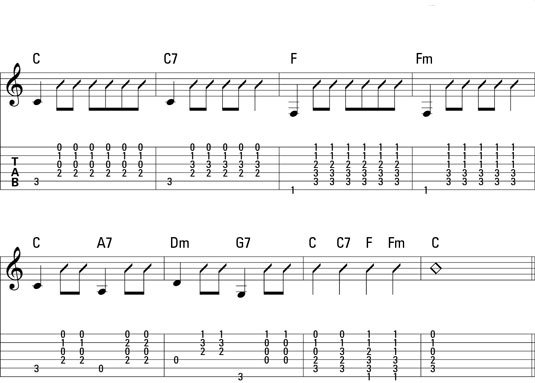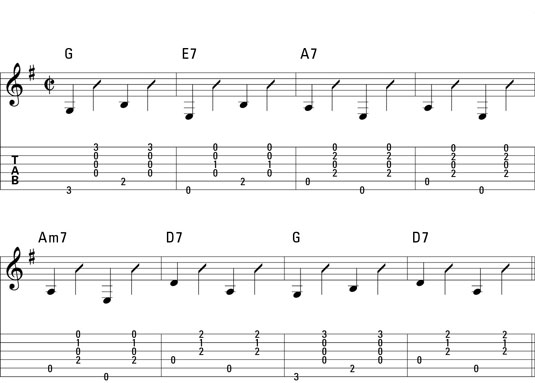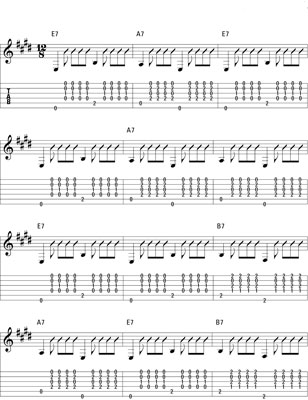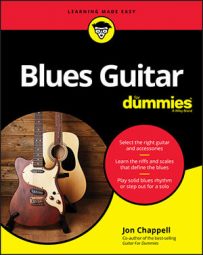Knowing how to read and use pick-strum patterns is a great way to provide rhythmic variety and introduce different textures into your guitar playing. Pick-strum patterns separate the bass and treble so they play independently. In the pick-strum pattern, the pick refers to picking the single bass note, and the strum refers to the upper-string chord that follows. Both the pick and the strum are played with the pick in downstrokes.

Click here to download and print this guitar tab.
Listen this simple pick-strum pattern used in many folk blues and country blues songs.
A pick-strum approach is good for solo playing or if you’re the only rhythm instrument, because the bass notes fall on different parts of the measure than the chord parts. If you’re playing solo guitar, you play a lot more pick-strum patterns. In a band setting, the pick-strum will fall to the bass player.
Here are a couple common pick-strum patterns:
Two-beat or cut shuffle: The two-beat or cut shuffle is sometimes referred to as a boom-chick pattern because the bass note and chords alternate. A two-beat feel is common in Dixieland and big-band jazz, polka, samba, country, and blues.

Click here to download and print this guitar tab.
The 12/8 groove: The 12/8 groove is the slowest pattern of the blues, so it helps to have the bass note play twice, on beats one and three, while the chords play on beats two and four.


